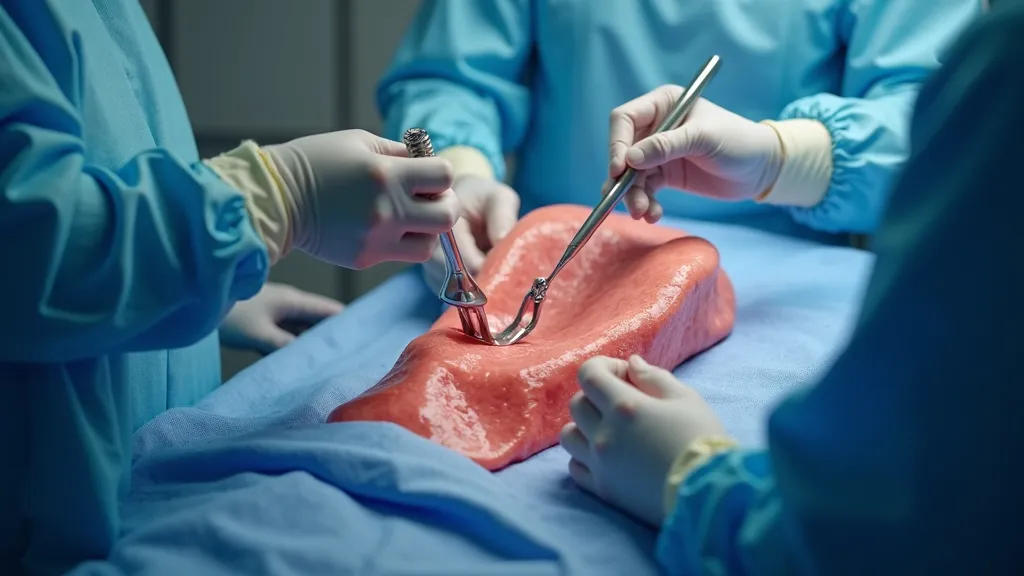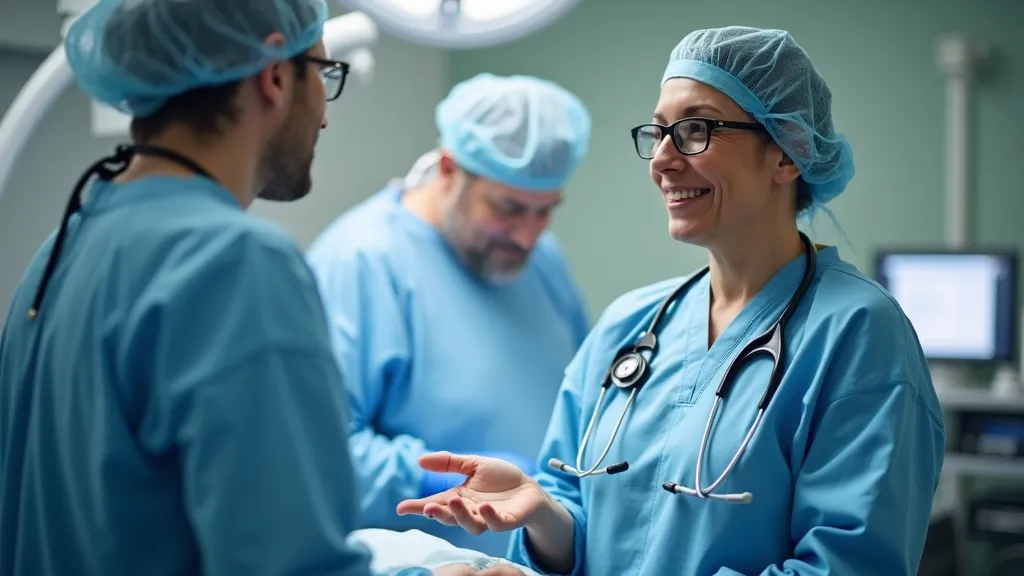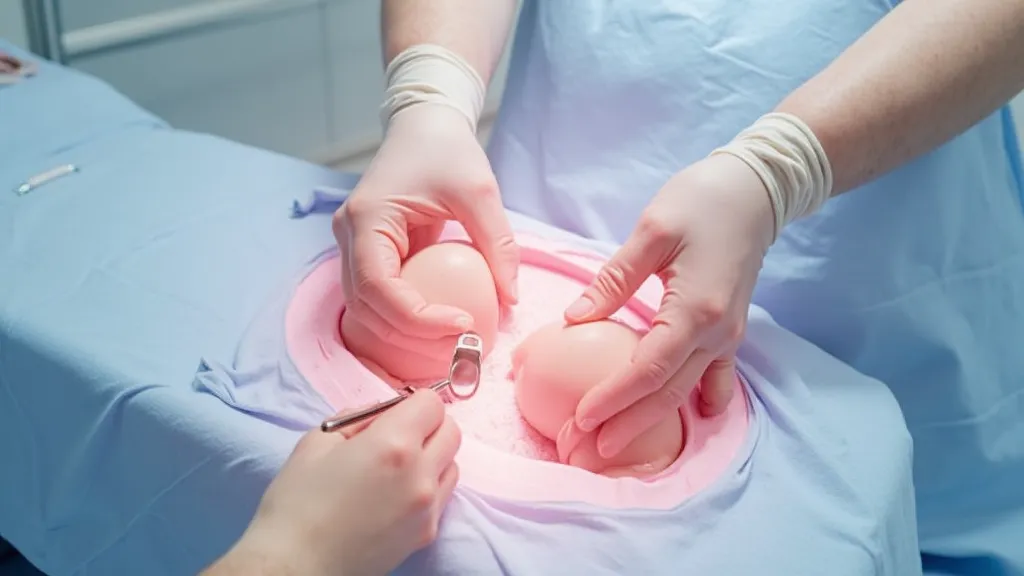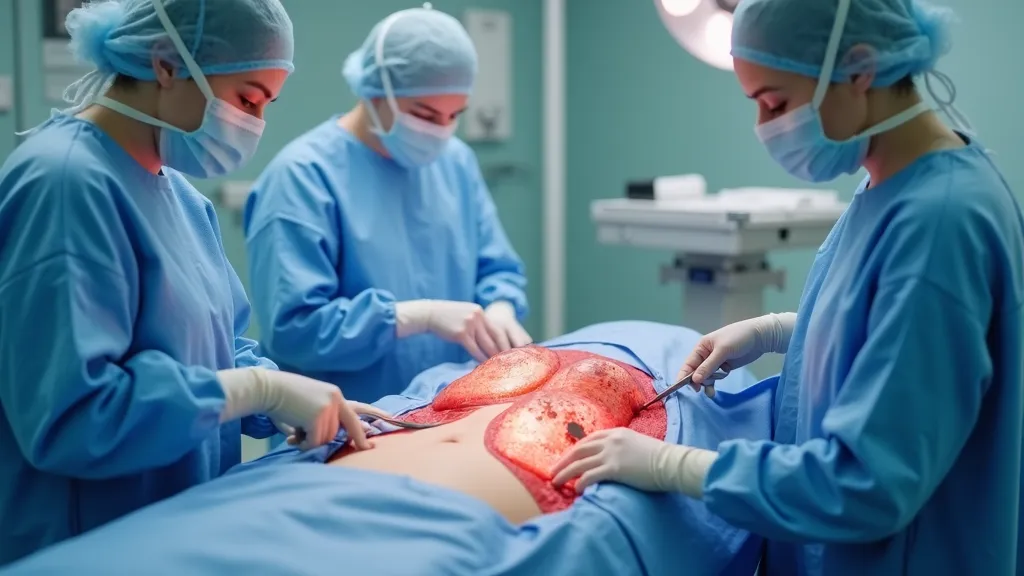Understanding Breast Transplant Procedures
Breast transplant procedures are an evolving area in reconstructive and cosmetic surgery, primarily aimed at restoring breast shape and size following mastectomy or for aesthetic enhancement. This article delves into the complexities of breast transplants, providing a thorough analysis of surgical methods, potential risks, and advancements in the field, offering readers an expert perspective on this specialized medical procedure.

Introduction to Breast Transplants
Breast transplants represent a significant advancement in the field of reconstructive and cosmetic surgery. This procedure is predominantly sought by individuals who have undergone mastectomy due to breast cancer or those seeking aesthetic enhancement. Unlike breast implants, which involve silicone or saline prosthetics, breast transplants focus on using autologous tissue, providing a more natural look and feel. The growing acceptance of breast transplants reflects a broader trend towards personalized medicine, where treatments are tailored to an individual's unique anatomy and needs.
Understanding the Procedure
The breast transplant process is intricate, involving the transplantation of tissue from one part of the body to the breast area. This method is also known as autologous breast reconstruction. The very common technique is the DIEP flap procedure, where tissue is taken from the lower abdomen and meticulously shaped to form a new breast. During the procedure, the surgeon disconnects the blood vessels in the abdominal tissue and reconnects them to blood vessels in the chest area, ensuring that the transplanted tissue remains viable and receives adequate blood supply.
In addition to the DIEP flap, there are other techniques for breast reconstruction using autologous tissue. The TRAM flap (Transverse Rectus Abdominis Muscle) involves the use of abdominal tissue and muscle, while the latissimus dorsi flap utilizes tissue from the upper back. Each method has its own set of advantages and considerations, and the choice of technique often depends on the patient's body type, the extent of tissue needed, and personal preference.
Benefits of Breast Transplants
Choosing a breast transplant over traditional implants comes with several advantages. The use of the patient’s tissue tends to result in a more natural appearance and reduces the risk of complications such as implant rupture or capsular contracture. Additionally, the transplanted tissue can grow and change with the body, offering good satisfaction. Patients often report that their new breasts feel more like their natural tissue, enhancing the overall body image and emotional recovery following surgery.
Moreover, breast transplants provide the opportunity for more extensive reconstructive options. Surgeons can adjust the size and shape of the new breast based on the patient's preferences and anatomical considerations. This flexibility can lead to outcomes that are more aesthetically pleasing and aligned with the patient’s vision for their body. As a result, many patients find that breast transplants can significantly improve their quality of life and psychological well-being.
Comparing Techniques: Breast Transplant vs. Implants
| Aspect | Breast Transplant | Breast Implants |
|---|---|---|
| Material | Autologous tissue | Silicone or saline |
| Longevity | Good with natural aging | May require replacement |
| Appearance | Natural look and feel | Can appear artificial |
| Risks | Requires surgery on donor site | Implant-related complications |
| Recovery Time | Several weeks to months | Shorter recovery time |
| Future Changes | Changes with body | Can shift or degrade |
Advancements in Breast Transplant Surgery
Recent advancements in microsurgical techniques have significantly improved the success rates of breast transplants. Surgeons now utilize advanced imaging technologies to plan surgeries with higher precision, minimizing risks and improving aesthetic outcomes. For example, three-dimensional imaging and computer simulations allow surgeons to visualize the anatomy of the patient’s body in detail, leading to more informed surgical planning.
Additionally, ongoing research into tissue engineering and regenerative medicine holds promise for even more refined techniques in the future. Scientists are exploring the potential of lab-grown tissues and bioengineered scaffolds to further enhance breast reconstruction options. These developments could lead to new techniques that minimize donor-site morbidity and offer even more personalized solutions for patients.
Potential Risks and Considerations
While breast transplants offer numerous benefits, they are not without risks. Complications can include infection, bleeding, and issues at the donor site. Patients must undergo thorough medical evaluations to determine their suitability for the procedure and discuss potential outcomes and complications with their surgeon. It is crucial for patients to have realistic expectations and understand that while breast transplants can lead to excellent results, they do require a commitment to a recovery process that may include physical therapy and follow-up visits.
Another important consideration is the psychological impact of the surgery. Many patients have undergone significant emotional trauma due to breast cancer or body image concerns. Therefore, comprehensive pre-operative counseling is essential to prepare patients mentally for the changes that will occur post-surgery. Support groups or therapy can also be beneficial for patients navigating their feelings about their bodies and the reconstruction process.
FAQs
- What is the recovery time for a breast transplant? Recovery typically takes several weeks, with full recovery expected within a few months. Patients may experience swelling and discomfort, which can be managed with medication.
- Are breast transplants suitable for everyone? Not all patients are candidates for breast transplants. A detailed consultation with a plastic surgeon is necessary to assess eligibility. Factors such as overall health, body type, and personal goals will influence the decision.
- How does the cost of a breast transplant compare to implants? Breast transplants are generally more expensive due to the complexity of the procedure and the need for specialized surgical expertise. Insurance coverage may vary, so it's essential for patients to discuss financial options with their healthcare provider.
- Can breast transplants be done in conjunction with other procedures? Yes, many patients opt for combined procedures, such as a tummy tuck or liposuction, to enhance their overall body contouring while undergoing breast reconstruction.
- What kind of follow-up care is required after a breast transplant? Follow-up care is crucial for monitoring healing and ensuring the success of the transplant. Patients will have regular appointments to check on the surgical site and assess the overall health of the transplanted tissue.
Conclusion
In conclusion, breast transplants offer a viable and often preferable alternative to traditional breast implants, particularly for individuals seeking a more natural result post-mastectomy or for cosmetic purposes. The advancements in surgical techniques, combined with a deeper understanding of patient needs and experiences, are shaping the future of breast reconstruction. As surgical techniques continue to evolve, patients can expect even greater outcomes and reduced risks associated with this intricate procedure. The emotional and psychological benefits of breast transplants can profoundly impact a patient’s life, allowing them to reclaim their body and confidence.
The Future of Breast Reconstruction
Looking ahead, the field of breast reconstruction is poised for further innovation. As technology advances, the development of new surgical techniques and materials that prioritize patient comfort and outcomes will likely emerge. For instance, the integration of artificial intelligence in surgical planning and post-operative care could enhance precision and personalization in treatment.
Moreover, patient education and advocacy will play a critical role in the future of breast reconstruction. As more individuals learn about their options, they can make informed decisions that best suit their bodies and lifestyles. Empowering patients with knowledge about the various techniques, potential outcomes, and risks is essential in fostering a positive surgical experience.
Furthermore, ongoing research into the long-term outcomes of breast transplants will be vital. As more data becomes available, it will help refine surgical techniques, improve patient selection criteria, and enhance overall satisfaction with breast reconstruction. The collaboration between surgeons, researchers, and patients will be crucial in driving these advancements forward.
Personal Stories and Testimonials
The impact of breast transplants extends beyond the surgical outcome; personal stories and testimonials from patients reveal the profound changes these procedures can bring to their lives. Many women who have undergone breast transplants share feelings of empowerment and renewed self-esteem. They describe how the surgery allowed them to embrace their femininity and feel more comfortable in their skin.
For instance, one patient, who underwent a DIEP flap procedure after a mastectomy, expressed that the ability to use her own tissue made her feel more connected to her body. She noted, “I wanted something that felt like me. The transplant did that. It’s not just about how I look; it’s about how I feel, and I feel whole again.”
These testimonials highlight the importance of considering emotional and psychological factors when discussing surgical options. The journey to recovery is not solely physical; it encompasses emotional healing and rebuilding one's identity after a life-altering event such as cancer. Support groups and community resources play a significant role in helping patients navigate this journey, connecting them with others who have had similar experiences and fostering a sense of solidarity.
Conclusion: A Holistic Approach to Breast Reconstruction
In summary, breast transplants represent a remarkable option for individuals seeking breast reconstruction, whether due to cancer or aesthetic desires. The unique benefits of using autologous tissue, combined with advancements in surgical techniques and patient-centered care, make breast transplants a compelling choice for many. As the field continues to evolve, the focus on holistic approaches that consider physical, emotional, and psychological well-being will shape the future of breast reconstruction.
Ultimately, the journey of each patient is unique, and the decision to pursue breast reconstruction should be based on thorough discussions with qualified professionals. Patients must feel empowered to ask questions, explore options, and choose the path that best aligns with their goals and values. With ongoing innovation and a commitment to patient care, breast transplants will continue to transform lives, offering hope and healing to those who seek it.
-

A Guide to Cost-Efficient Small Electric Cars for Seniors
-

Mastering Debt Consolidation: Boost Your Credit Score and Manage Interest Rates
-

Your Guide to Loans, Credit Checks, and Interest Rates
-

Affordable Independent Living: Finding the Right Senior Housing
-

Guide to Senior Living Apartments: Affordable and Comfortable Environments










